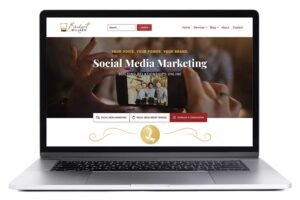Affinity Diagrams Can Ease Your Overwhelm & Transition Into Management
Allowing for errors builds a collaborative spirit and fosters innovation.

You’re Now a Team Supervisor
Leadership skills are great but can go unused or at least missed if you get bogged down in the “job” and don’t have experience or mentoring to be a good manager. I remember being in that very position. I was a new marketing manager and excited to flex my intellectual muscles and leadership skills in this new role with a new organization. But, overwhelm became my downfall. With all the new employee training, job tasks, emails, and learning new processes and applications, I was so mentally exhausted by the time I had to get together with my team. I recognized I had a problem and was overwhelmed but had no idea how to get my head above water or what to do to ease my burden while improving the department. I took that lesson to heart, and spent a lot of time after leaving the organization researching ways to solve all the problems I had noticed. While “user” experience wasn’t on my radar as a solution to my overwhelm and to making the transition to manager go more smoothly.
When you’re new to being in charge, running meetings, and managing teams, it can be overwhelming and paralyzing. If you do nothing, your career and department will spiral out of control. You’ll be reacting constantly and never have time to take proactive steps that can reduce redundancies, allow you to delegate more, and create more time for innovation, collaboration, and promotion.
If you’re a new manager through promotion or new-hire, you’re typically placed there based on certain skills and work experience–all but one–management. While leadership is natural but hard (not impossible) to learn, management is a skill that can be learned and cultivated. So, you’re hired because you have a skill that cannot be taught, but left to learn on your own how to manage.
Often, you get put into positions without mentorship or training and left to figure it out on your own. If you’re lucky, you figure out how to do it well and create a healthy team. Too often, that’s not the case. If you’re overwhelmed with work, the management aspect of the job gets put on the back burner. Then, the time for year-end reviews arrives, and you, as the manager, fumble frantically through projects, calendars, emails, and other notes to piece together a “paper trail” of information to guide or justify your evaluations and ratings. If a bonus is tied to the reviews, you’re stuck!
Ack! I have to make an arbitrary decision, and someone is going to be upset or worse–overlooked!
While much of your work could indeed be quantitative and easily measurable, there’s often a lot that’s qualitative. And, that’s where we get stuck. How do we track and measure qualitative data?
One simple project can help you not only easily slide into leading a meeting with more participation but also with true collaboration and implementation of measurements for qualitative data.
Affinity Diagramming: A fancy word for organizing content by categorizing similar responses into topic groups
You don’t want to get mired in metrics because you don’t want to miss the nuances of relationships, making deeper connections, and understanding how the team can work better together. Affinity diagrams are a great tool to facilitate engagement and collaboration while positioning you and your team as leaders with improvements on processes, measuring the immeasurable, and getting input from the entire team–true collaboration where everyone’s response matters. (It’s common practice in user experience design but applicable to all areas of work.) For example, Human Resources might want to analyze the culture in the organization. Instead of creating a specific, weighted survey, From reviews and other surveys the department may have conducted throughout the year, the department could use an affinity diagram to organize common responses and feedback into similar topical categories. With the responses grouped into categories with similar information, trends and gaps are exposed. This can help improve processes as well as providing measurable results from qualitative responses.
What does an affinity diagram look like?
Certainly, you’ll get a picture that’s worth a thousand words, but just know it’s as simple as putting individual responses on their own Post-It Note onto a board then grouping them based on similarities. For example, below is an example from Lucid Chart, where they are trying to identify “the glitches in their content creation process”.
Source: www.lucidchart.com, Emily Christensen
The most obvious place to start is from responses to common questions within the department or organization. The responses can vary, but the questions, what you can actually control, are generally somewhat uniform to prevent bias and leading to a particular answer. During the diagramming, all responses are added to the board or wall. The team collectively discuss similarities in responses and agree on topical categories. This activity helps the manager create the beginnings of a collaborative culture. Further engagement can be cultivated by the manager, who’s finally able to exercise those leadership skills, acknowledging that the process is iterative and what might be identified one day as the solution could be revealed later as ineffective. Continuous feedback means that the goal post is continuously moving, but movement towards improvement is always the goal.
Allowing and expecting for errors builds that collaborative spirit while also fostering innovation. This is where careers are made–not just for the leader but also for the entire team–and the entire organization and its clients win. Happy clients are the ultimate win (result), and returning clients are the ultimate proof (testimonial).
Video Resources
You could step into your meeting now, but I’d rather provide you with a few videos demonstrating the process. This way, you confidently step into the meeting knowing what to do.
- For more reading and video demo: https://openpracticelibrary.com/practice/affinity-mapping
Don’t put all of your eggs in one basket.
A few years ago, Vine was the hot video social media platform. Vine stars grew followers/audiences quickly. Overnight, the platform died. All those followers…gone. All that social media collateral…gone. All that social media influence…gone. They were forced to start over again.
The Builders Podcast With Matt Levenhagen & Rhonda Negard
Watch Episode 47: Meet Rhonda Negard – Her Story Becoming a Business Owner, Leaving Corporate to Build a Business & More on the Builders Podcast…
7 of the Best Paid and Free Avenues to Drive Traffic to Your Website Right Now
By Warren Laine-Naida Oh, God. Another blog post about increasing traffic to my website? Wrong. Yes, we lured you here on that pretext, but you’re…
A Dragon, a Widow, and a Bird: A Case Study on Rebranding Bridget Willard, LLC
What do a dragon, a widow, and a bird have in common? It’s the start of a joke, right? The Inside Scoop, a Story for…
Why Sliders Aren’t Doing What You Think: A Good Idea for Your Website?
So few users ever interact with sliders. If “only around 1% of users click on sliders (Erik Runyon)”, you’ve potentially lost a lot of leads or repeat business.





